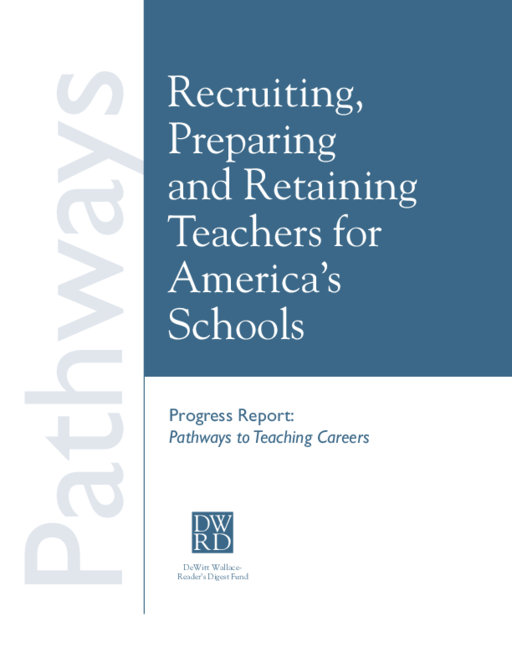Breadcrumb
- Wallace
- Reports
- Recruiting, Preparing, And Retai...
Recruiting, Preparing, and Retaining Teachers for America's Schools

- Author(s)
- Beatriz Chu Clewell and Ana Maria Villegas
- Publisher(s)
- The Wallace Foundation
Summary
How we did this
This initial report on Wallace’s Pathways to Teaching Careers initiative examines scholarships and other supports offered by 42 colleges and universities to help educate nontraditional candidates such as classroom aides, returning Peace Corps volunteers and uncertified teachers for careers in teaching.
This is the initial report on Wallace’s Pathways to Teaching Careers initiative. It examines scholarships and other supports offered by 42 colleges and universities to help prepare nontraditional candidates for teaching careers. These candidates include paraprofessionals, returning Peace Corps volunteers, and uncertified teachers. The initiative aimed to reduce teacher shortages in hard-to-staff urban and rural schools.
The initiative recognized that each group of non-traditional candidates had particular skills and strengths. Paraprofessionals and uncertified teachers may have years of experience working with teachers and students. They are also more likely to share the linguistic and cultural backgrounds of their students. (Some 85 percent of candidates in two groups were nonwhite.) Peace Corps volunteers often have experience teaching in cultures other than their own under challenging circumstances.
The report found Pathways making strong progress mid-way through the initiative on student retention and course progress. Pathways projects retained 90 percent of their 2,134 students. The percentage of candidates who had completed half their coursework was also high. Supports provided through the initiative may have been one reason. They included scholarships, childcare, and academic tutoring. Some programs innovated supports in response to student needs. For example, at least one program arranged part-time, rather than the typical full-time, student teaching assignments. That allowed candidates to maintain their regular jobs and benefits.
Key Takeaways
- Wallace’s Pathways to Teaching Careers initiative recruited and prepared non-traditional candidates for hard-to-staff urban and rural schools. These candidates included paraprofessionals, uncertified teachers, and returning Peace Corps volunteers. More than 2,000 candidates and 40 teacher preparation programs participated.
- The initiative recognized that each group of non-traditional candidates had particular strengths. For example, paraprofessionals and uncertified teachers may have years of experience working with teachers and students.
- The initiative provided nontraditional students needed supports. These varied by site but included childcare, tutoring, and scholarships.
- A midpoint evaluation found that the initiative had high rates of retention and course progress.


